Yucatan Miniature Pig
The Yucatan Miniature Pig: Saving Human Lives in Medical Procedures
Today there are around 117,000 people across the United States in need of an organ transplant, with 75,000 on an active waiting list. While 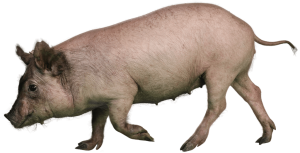 nearly 100 transplants occur throughout the US daily, there is still many people in need. Recently, doctors and scientists have had great luck in using the Yucatan miniature pig, in saving human lives. Here’s a little bit more about the pigs, where they came from, and what the medicial industry is doing with them.
nearly 100 transplants occur throughout the US daily, there is still many people in need. Recently, doctors and scientists have had great luck in using the Yucatan miniature pig, in saving human lives. Here’s a little bit more about the pigs, where they came from, and what the medicial industry is doing with them.
The Original Yucatan Pig
The Mexican hairless pig, or Yucatan pig, has been bred for more than 5 centuries in the Yucatan Peninsula. The pigs were originally introduced to the area by the Spanish Conquistadors and have been raised by farmers in the area ever since. The Mayan word for these pigs is t’ooroch k’eek’een.
The intensely flavored pork is low in fat and is used in many typical dishes of the Yucatán Peninsula, like cochinita pibil (pork wrapped in plantain leaves and baked in an underground earth oven) and poc chuc (marinated and cooked over charcoal).
Scientists have developed a miniature version of the Yucatan pig, and they’ve become lifesavers to many humans, and not just those awaiting organ and valve transplants.
Enter the Yucatan Miniature Pig to the Rescue
The Yucatan miniature pig is slate-gray, essentially hairless, and a direct descent from the wild pigs that can be found throughout the Peninsula and Cozumel island. Piglets are known for their docile temperament and become quickly used to human contact and being handled. This particular breed of pig is the closest living mammal in respects to humans. The miniature versions are around 120 – 140 pounds (54 – 63 kilos) making their organs a similar size to that of humans.
When raised in an extremely controlled and medically stable environment, the pig heart valves can be used to save lives. The skin can be used to help burn victims heal quicker and with less pain, tissue rejuvenation and most recently xenotransplants, where human organs are actually grown inside the living animals.
Scientists have been using the Yucatan miniature versions since the late 1970’s, however recent technology and discoveries have also been 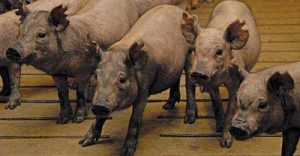 developed and discovered using the mini pigs.
developed and discovered using the mini pigs.
El cerdo miniatura de Yucatán; salvando vidas humanas en procedimientos médicos
En la actualidad existen alrededor de 117,000 personas en los Estados Unidos que requieren transplante de órganos; de éstos, 75,000 forman parte de una lista de espera activa. A pesar de que diariamente se realizan cerca de 100 transplantes en los EE. UU., aún hay muchas personas que los requieren. En fechas recientes, tanto médicos como científicos han tenido suerte salvando vidas humanas al usar a los cerdos miniatura de Yucatán. Aquí les ofrecemos un poco más de información acerca de estos cerditos, y lo que la industria médica está haciendo con ellos.
El cerdo endémico de Yucatán
El cerdo pelón mexicano, o cerdo de Yucatán, ha sido criado durante más de 5 siglos en la Península de Yucatán. Los conquistadores españoles fueron quienes originalmente introdujeron a los cerdos en la región y desde entonces han sido criados en el área. La palabra en 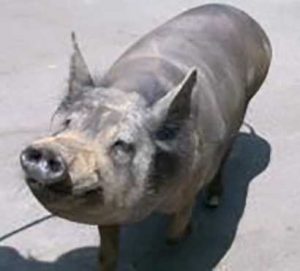 maya para estos cerdos es t’ooroch k’eek’een.
maya para estos cerdos es t’ooroch k’eek’een.
Este cerdo de sabor intenso es bajo en grasa y se usa en muchos platillos típicos de la Península de Yucatán tales como la cochinita pibil (cerdo envuelto en hojas de plátano y se hornea enterrado bajo tierra), y el poc chuc (marinado y cocido sobre carbón vegetal).
Los científicos han desarrollado una versión en miniatura del cerdo de Yucatán, y se han convertido en salvavidas de muchos humanos, y no sólo de aquellos que esperan transplantes de órganos y de válvulas cardiacas.
Entra el cerdo miniatura de Yucatán al rescate
El cerdo miniatura de Yucatán es de color grisáceo, principalmente sin pelo, y es descendiente directo de los cerdos salvajes que es posible encontrar en toda la Península y en la Isla de Cozumel. Los cerditos son conocidos por su temperamento dócil y se acostumbran rápidamente tanto al contacto humano como a ser manejados. Esta raza en particular es el mamífero vivo que más se acerca a los humanos. Las versiones miniatura pesan alrededor de 120 – 140 libras (54 – 63 kilos), haciendo que el tamaño de sus órganos sea similar al de los seres humanos.
Cuando son criados en un ambiente controlado al extremo y medicamente estable, las válvulas cardiacas del cerdo pueden usarse para salvar vidas. La piel puede ayudar a que las víctimas por quemaduras sanen más rápido, con menos dolor, al rejuvenecimiento de tejido y, desde hace poco, con los xenotransplantes donde de hecho se desarrollan órganos humanos dentro de animales vivos.
Desde finales de la década de 1970, los científicos han estado usando las versiones en miniatura de Yucatán; sin embargo, la tecnología reciente y hallazgos también se han desarrollado y descubierto a través del uso de mini cerditos.
______________________________
Una ex yanqui de Connecticut quien llama hogar a Cozumel desde hace más de 15 años. Laura escapó al Caribe hace años, desplazándose de una isla a otra dando clases de BUCEO. Se dedicó a perder el tiempo en Jamaica y finalmente se detuvo en Cozumel para pasar unas vacaciones de 2 semanas que aún no terminan. Convenciendo a sus padres que pagaran una elegante universidad privada, obtuvo su título en Periodismo y Laura crea semanalmente Cozumel 4You, medios sociales y artículos promocionales sobre la Isla y también es moderadora en el grupo Cozumel 4 You en Facebook que actualmente cuenta con 25,000 miembros. Fabián, s umuy tolerante marido, desde hace mucho tiempo se resignó a no tener vida privada, pues se ha visto implicado en los diversos proyectos y planes que urde Laura. Son orgullosos padres de diversos perros y gatos rescatados. Mientras contempla su paso a través de la vida en el Caribe mexicano,Laura continúa siendo la pesadilla en la existencia de su muy tradicional suegra mexicana.
- June Hot Weather Bees Cozumel - June 20, 2025
- Cozumel Trash Clean Up - June 20, 2025
- Sargassum Windsurfing Cozumel - June 20, 2025
An ex-Connecticut Yankee who has called Cozumel home for over 18 years, Laura ran away to the Caribbean years ago, bumped around the islands teaching SCUBA diving, lost some time in Jamaica, and finally stopped in Cozumel for a 2 week vacation that hasn’t ended yet. With a degree in Journalism from a fancy private college she convinced her parents to pay for, Laura writes, edits, and creates the weekly Cozumel 4 You news, social media, and promotional articles about the island, as well as moderates the Cozumel 4 You Facebook group, which currently has over 25,000 members. Her long suffering husband, Fabian, has long since resigned himself to having zero private life, as he’s been involved in her various schemes and plots since his arrival. Proud parents to a variety of rescue dogs and cats, Laura continues to be the bane of her traditional Mexican mother-in-law’s existence, as she muses her way through life in the Mexican Caribbean. ______________________________ Una ex yanqui de Connecticut quien llama hogar a Cozumel desde hace más de 15 años. Laura escapó al Caribe hace años, desplazándose de una isla a otra dando clases de BUCEO. Se dedicó a perder el tiempo en Jamaica y finalmente se detuvo en Cozumel para pasar unas vacaciones de 2 semanas que aún no terminan. Convenciendo a sus padres que pagaran una elegante universidad privada, obtuvo su título en Periodismo y Laura crea semanalmente Cozumel 4You, medios sociales y artículos promocionales sobre la Isla y también es moderadora en el grupo Cozumel 4 You en Facebook que actualmente cuenta con 25,000 miembros. Fabián, s umuy tolerante marido, desde hace mucho tiempo se resignó a no tener vida privada, pues se ha visto implicado en los diversos proyectos y planes que urde Laura. Son orgullosos padres de diversos perros y gatos rescatados. Mientras contempla su paso a través de la vida en el Caribe mexicano, Laura continúa siendo la pesadilla en la existencia de su muy tradicional suegra mexicana.
June Hot Weather Bees Cozumel
June Hot Weather Bees Cozumel June’s Hot Weather Can Bring Out...
2025 Cozumel Caribbean Hurricane Season
2025 Cozumel Caribbean Hurricane Season 2025 Cozumel Caribbean Hurricane Season Meteorologists...
Conch Ban Season Cozumel
Conch Ban Season Cozumel Respect the “Out of Season” Conch Ban in...
Cozumel Sargassum Seaweed 2025
Cozumel Sargassum Seaweed 2025 Summer is Here & so is Sargassum The...












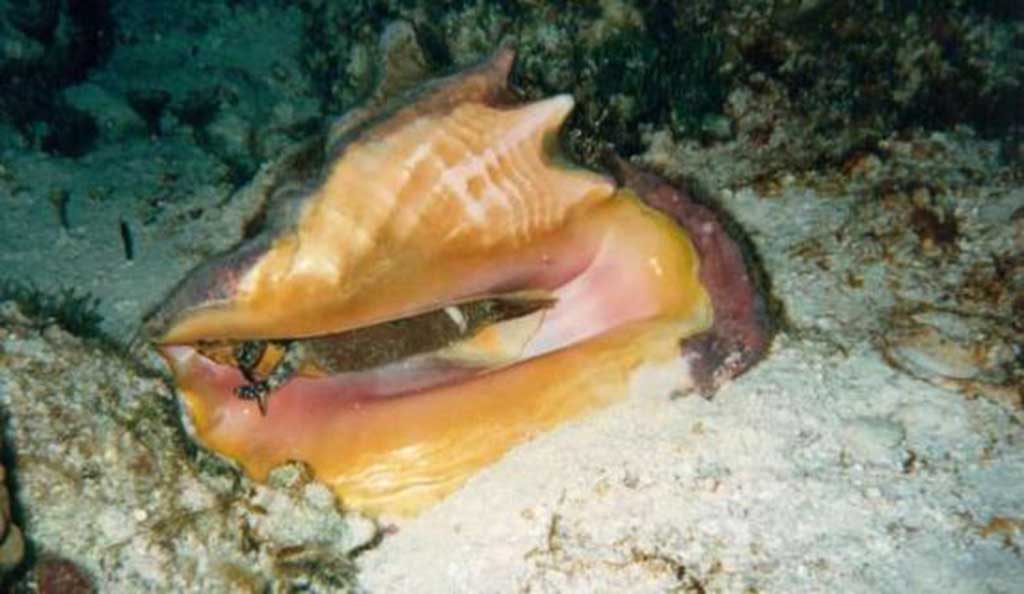
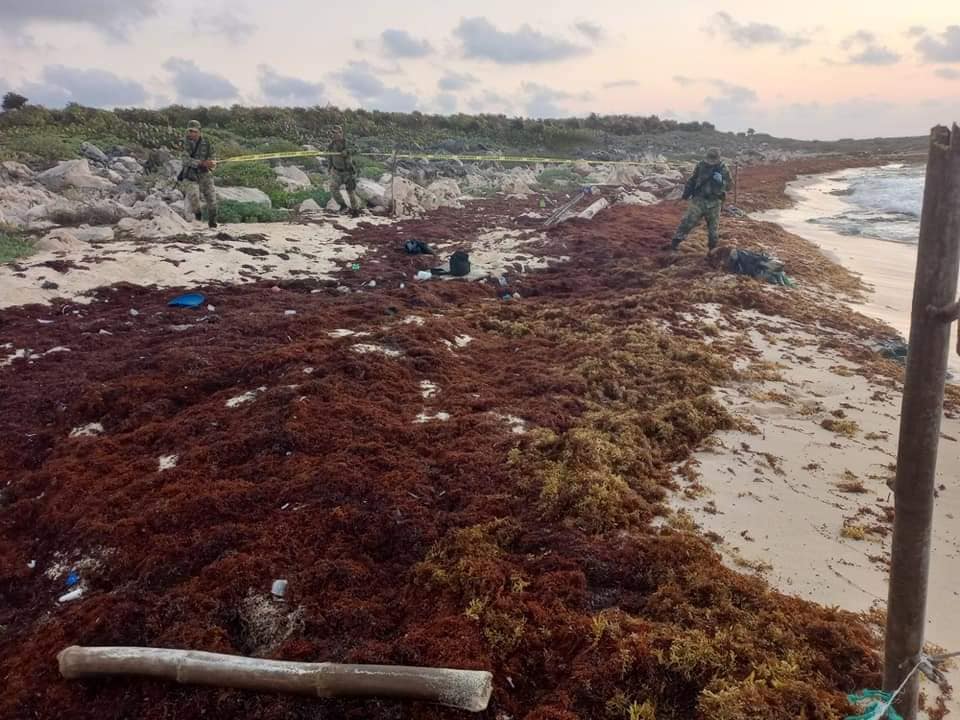



Leave a comment